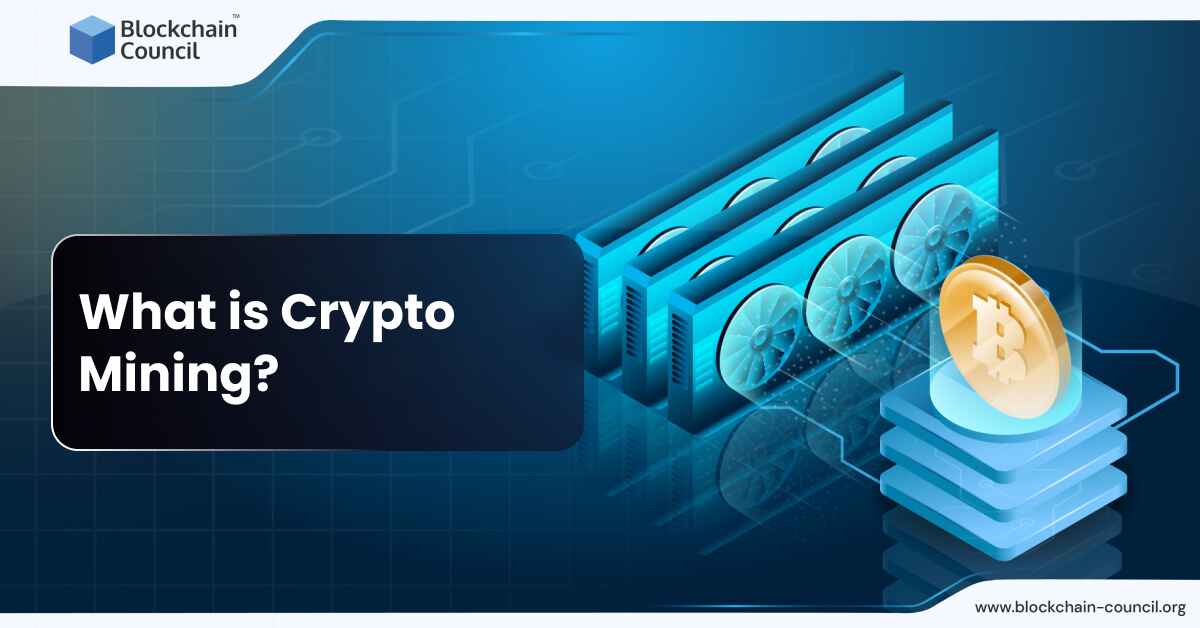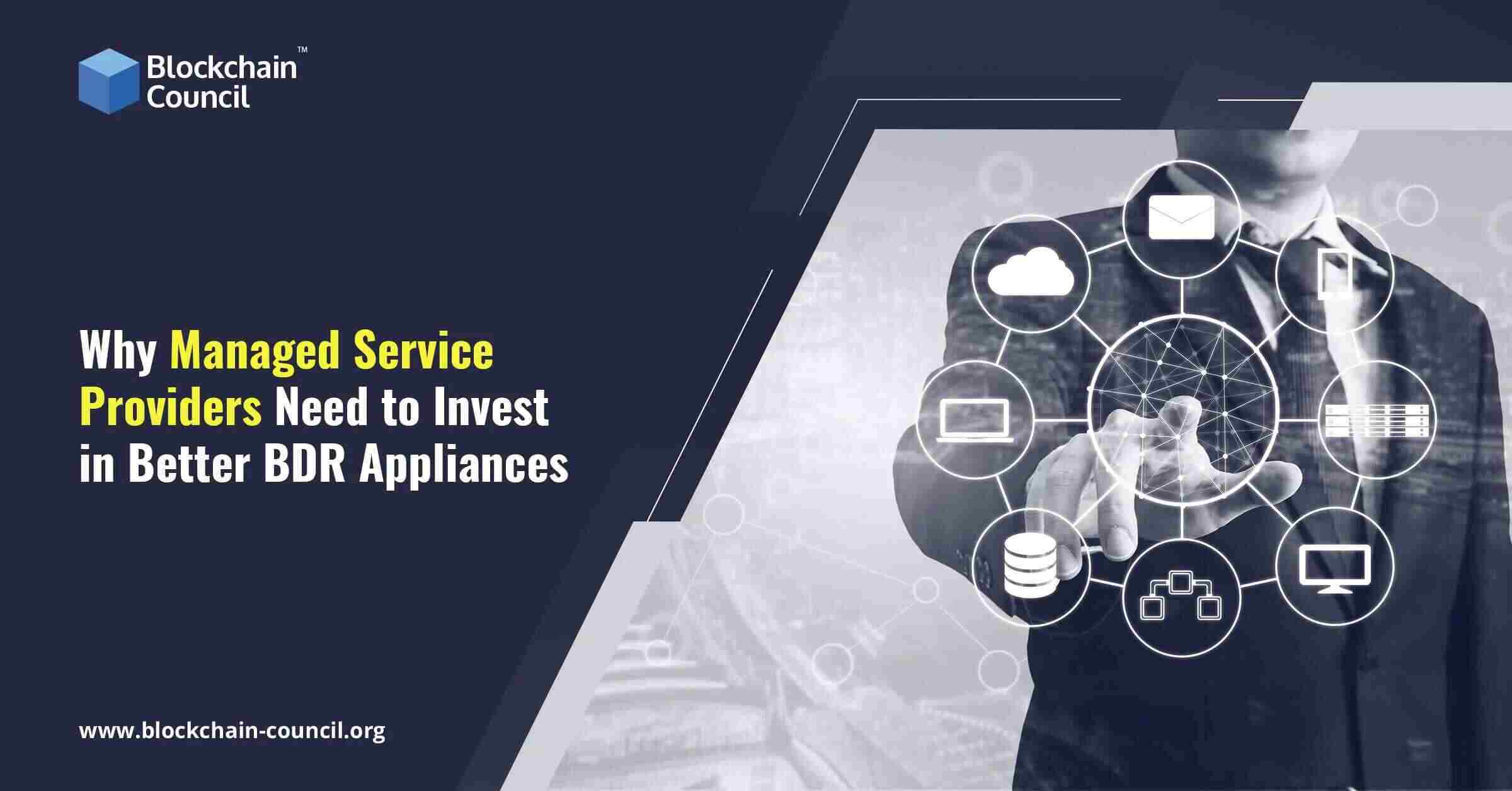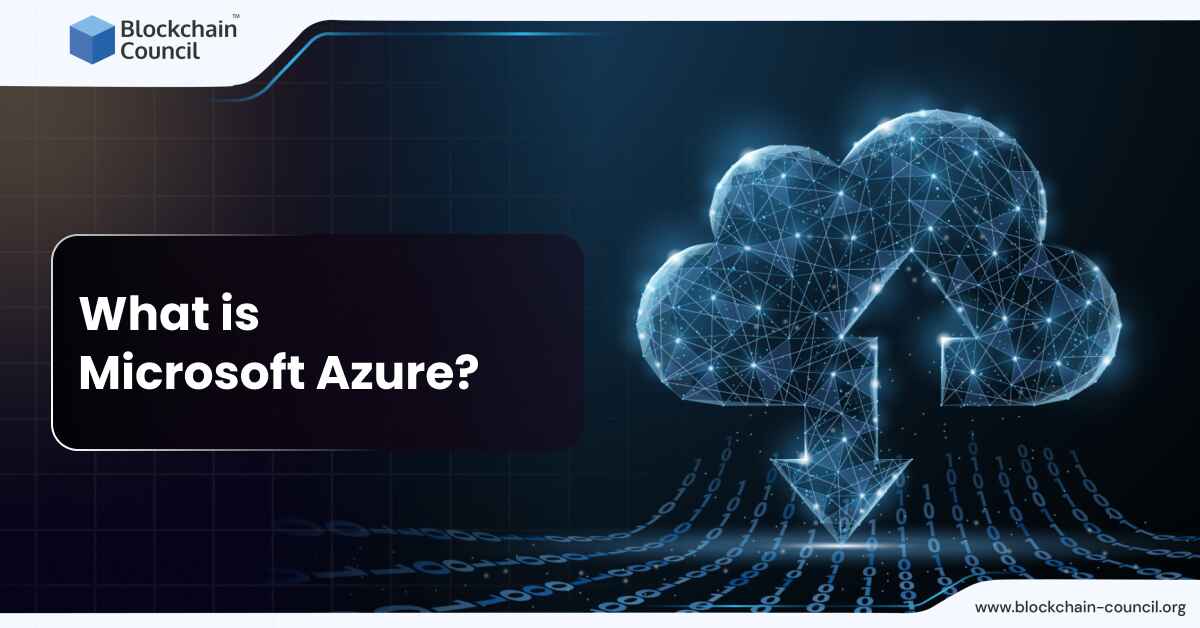
- Blockchain Council
- September 02, 2024
Crypto mining is a process that many people hear about but few understand fully. Let’s find out what crypto mining actually is!
Cryptocurrency Mining
Crypto mining is the process of validating transactions on a Blockchain and adding new blocks to it. This involves solving complex mathematical problems using specialized computers. When a miner successfully solves these problems, they get to add a new block to the Blockchain and are rewarded with newly minted cryptocurrency. This process is essential for maintaining the security and integrity of the Blockchain network.
Boost Skills with Cryptocurrency Certification
How Does Mining Work?
Crypto mining works through the following steps:
- Transaction Collection: When someone makes a cryptocurrency transaction, it is grouped with other transactions into a “block.”
- Validation: Miners use powerful computers to solve mathematical puzzles. These puzzles are based on a cryptographic hash function, which transforms the transaction data into a fixed-length string of numbers and letters. The goal is to find a hash that meets certain criteria.
- Proof of Work: This process, known as proof of work (PoW), requires significant computational power. The first miner to find the correct hash gets to add the block to the Blockchain.
- Reward: The miner who successfully adds the block receives a reward in the form of cryptocurrency. For example, Bitcoin miners receive newly created bitcoins as well as transaction fees from the transactions included in the block.
- Blockchain Update: Once a block is added, it is broadcast to the entire network. Other miners verify the block, ensuring that all transactions within it are legitimate and that no double-spending has occurred.
- Repeat: The process then repeats, with miners constantly working to solve new puzzles and add new blocks.
Pros of Cryptocurrency Mining
- Earning Potential: Cryptocurrency mining can be very profitable. Miners receive rewards in the form of newly minted coins and transaction fees. This provides a steady stream of income, especially if the value of the mined cryptocurrency increases over time.
- Supporting Network Security: Miners play a crucial role in maintaining the security of the Blockchain. By verifying and adding transactions, they help prevent fraud and attacks, ensuring the network remains decentralized and secure.
- Innovation and Technological Advancement: The demand for more efficient mining hardware has driven technological advancements. Specialized mining rigs, such as ASICs, have been developed to handle the complex calculations required for mining, making the process more efficient and accessible.
- Decentralization: Mining helps maintain the decentralized nature of cryptocurrencies. This decentralization reduces the reliance on central authorities and intermediaries, promoting a more open and transparent financial system.
- Potential to Hedge Against Inflation: Cryptocurrencies like Bitcoin have a capped supply, which can act as a hedge against inflation. Unlike traditional currencies, which can be printed in unlimited quantities, the limited supply of certain cryptocurrencies helps maintain their value over time.
Cons of Cryptocurrency Mining
- High Initial and Ongoing Costs: Setting up a mining operation requires significant investment in specialized hardware. Additionally, mining consumes a large amount of electricity, leading to high operational costs. These expenses can make mining unprofitable, especially if cryptocurrency prices drop.
- Environmental Impact: The energy consumption of mining operations is substantial. This high energy use contributes to carbon emissions and environmental degradation, raising concerns about the sustainability of cryptocurrency mining.
- Market Volatility: The value of mined cryptocurrencies can be highly volatile. Prices can fluctuate dramatically, which means the profitability of mining can change quickly. This volatility makes mining a risky investment.
- Complexity and Technical Challenges: Mining requires a deep understanding of the technology and constant updates to hardware and software. This complexity can be a barrier for new entrants and requires continuous investment in upgrading equipment.
- Potential for Fraud and Scams: There have been instances of fraud in mining pools and cloud mining services. Miners need to be cautious and conduct thorough research to avoid being scammed by dishonest operators.
Different Methods of Mining Cryptocurrencies
There are several ways to mine cryptocurrencies, each with its own advantages and challenges:
CPU Mining:
- How it works: Uses a computer’s central processing unit (CPU) to solve complex mathematical problems.
- Pros: Easy to start; requires minimal investment.
- Cons: Low efficiency and profitability; mostly obsolete for popular cryptocurrencies like Bitcoin.
- Best for: Mining less-known cryptocurrencies like Monero.
GPU Mining:
- How it works: Uses graphics processing units (GPUs) which are much faster than CPUs for mining.
- Pros: More efficient and powerful; good for a wide range of cryptocurrencies.
- Cons: Higher initial cost for GPUs; still less efficient than specialized hardware.
- Best for: Altcoins and other GPU-friendly cryptocurrencies.
ASIC Mining:
- How it works: Uses Application-Specific Integrated Circuits (ASICs) designed specifically for mining.
- Pros: Extremely efficient and powerful; high profitability for major cryptocurrencies like Bitcoin.
- Cons: Expensive; not versatile (only mines specific coins); hardware can become obsolete quickly.
- Best for: Bitcoin and other major cryptocurrencies that support ASIC mining.
FPGA Mining:
- How it works: Uses Field-Programmable Gate Arrays (FPGAs), which can be programmed to mine different coins.
- Pros: More efficient than GPUs; flexible to program for different algorithms.
- Cons: More complex setup and programming; higher power consumption than ASICs.
- Best for: Intermediate miners who want a balance between flexibility and efficiency.
Cloud Mining:
- How it works: Rents mining power from a remote data center, eliminating the need for personal hardware.
- Pros: Easy to start; no need to manage hardware.
- Cons: Potentially lower profitability due to fees; risk of scams or unreliable providers.
- Best for: Beginners or those who don’t want to invest in hardware.
Is Crypto Mining Worth It?
Crypto mining can be worth it, but its profitability depends on several factors. Efficient hardware, low electricity costs, and favorable cryptocurrency prices are crucial. ASICs, while expensive, offer the best efficiency, making them a preferred choice for mining Bitcoin. Locations with cheaper electricity improve profit margins significantly.
Market conditions, such as the value of the cryptocurrency and mining difficulty, also play a vital role. Additionally, operational costs like maintenance can impact overall returns. For those with high energy costs or limited access to efficient hardware, cloud mining might be a simpler but less profitable option. Always weigh these factors carefully before investing in mining.
The Tax Implications of Crypto Mining
Crypto mining involves earning cryptocurrency as a reward for validating transactions on a Blockchain. The IRS treats these rewards as taxable income. When you mine cryptocurrency, you must report the fair market value of the coins at the time you receive them as income. This applies regardless of whether you mine as a hobby or a business.
If you mine as a hobby, you report the income on Schedule 1 (Form 1040) as “other income.” However, hobby miners cannot deduct mining expenses like electricity or equipment costs. If you mine as a business, you report the income on Schedule C (Form 1040) and can deduct related expenses, potentially lowering your taxable income. Additionally, when you sell mined cryptocurrency, you must pay capital gains tax on any profit.
Is Crypto Mining Legal?
Crypto mining is generally legal in many countries, including the United States. However, regulations can vary significantly depending on local laws. In some places, governments have imposed restrictions or outright bans on crypto mining due to concerns over electricity consumption and environmental impact. For example, countries like China have banned mining activities, while others have specific regulations that miners must follow. It’s important to stay informed about the legal status of mining in your area to ensure compliance with local laws.
Why is Mining Important?
Mining is a crucial process for maintaining and securing many cryptocurrency networks, such as Bitcoin. Miners validate transactions and add them to the Blockchain, ensuring the integrity and security of the network. This process prevents double-spending and maintains a decentralized ledger. Miners are rewarded with new coins, which incentivizes them to continue contributing to the network. Without mining, these cryptocurrencies would be vulnerable to attacks and could not function properly.
Conclusion
Crypto mining plays a crucial role in the world of digital currencies. By solving complex problems, miners help generate new coins and keep the network safe. While it requires significant resources and technical know-how, it’s a key part of maintaining and growing the cryptocurrency system. As digital currencies continue to develop, mining will remain a fundamental part of this ecosystem.
FAQs
What is cryptocurrency mining?
- Cryptocurrency mining is the process of validating transactions on a Blockchain and adding new blocks to it.
- Miners use specialized computers to solve complex mathematical problems to complete this process.
- Successful miners are rewarded with newly minted cryptocurrency and transaction fees.
- This process is essential for maintaining the security and integrity of the Blockchain network.
How does cryptocurrency mining work?
- Transactions are grouped into a “block” and added to the Blockchain.
- Miners use powerful computers to solve mathematical puzzles based on a cryptographic hash function.
- The first miner to find the correct hash gets to add the block to the Blockchain and receives a reward.
- The process then repeats, with miners constantly working to solve new puzzles and add new blocks.
What are the different methods of mining cryptocurrencies?
- CPU mining uses a computer’s central processing unit to solve mathematical problems.
- GPU mining uses graphics processing units, which are faster than CPUs for mining.
- ASIC mining uses Application-Specific Integrated Circuits, designed specifically for mining.
- FPGA mining uses Field-Programmable Gate Arrays, which can be programmed to mine different coins.
Is cryptocurrency mining worth it?
- The profitability of mining depends on factors such as efficient hardware, low electricity costs, and favorable cryptocurrency prices.
- ASICs offer the best efficiency but are expensive.
- Market conditions, such as cryptocurrency value and mining difficulty, also impact profitability.
- Cloud mining is a simpler but potentially less profitable option for those with high energy costs or limited access to efficient hardware.





































































 Guides
Guides News
News Blockchain
Blockchain Cryptocurrency
& Digital Assets
Cryptocurrency
& Digital Assets Web3
Web3 Metaverse & NFTs
Metaverse & NFTs
